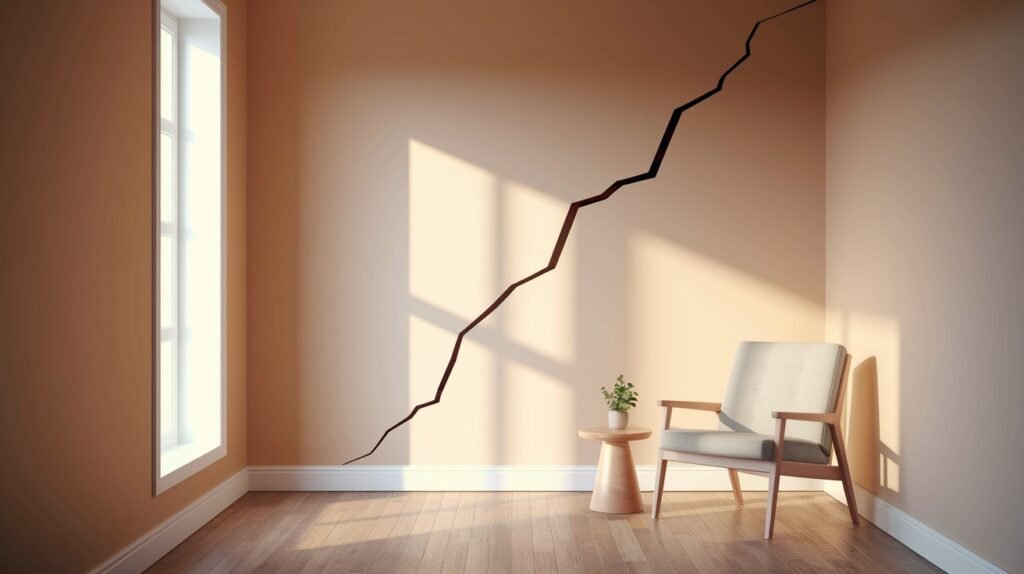You’re walking through your home when you spot it – a diagonal crack running across your wall that wasn’t there before. Your heart sinks a little. Is this serious? What’s causing it? And most importantly, what should you do about it?
Don’t panic. You’re not alone in this situation.
Diagonal wall cracks are more common than you think. They show up in homes across the country every day. The good news? Most can be understood and managed when you know what you’re looking at.
In this guide, we’ll walk you through the main causes of diagonal cracks, how to identify serious vs. minor issues, simple steps you can take right now, and when to call in professionals.
We’ve helped thousands of homeowners figure out their wall crack concerns. You can trust this information – it’s based on real experience from foundation experts who see these problems daily.
By the end, you’ll know exactly what’s happening with your walls and how to handle it confidently.
Primary Causes of Diagonal Wall Cracks
Let’s get straight to the point. Diagonal wall cracks don’t just appear randomly. They happen for specific reasons that you can understand and identify.
Understanding these causes helps you make smart decisions about your home. Some causes need immediate action. Others can wait. Knowing the difference saves you time, money, and stress.
Foundation Settlement – The Main Culprit
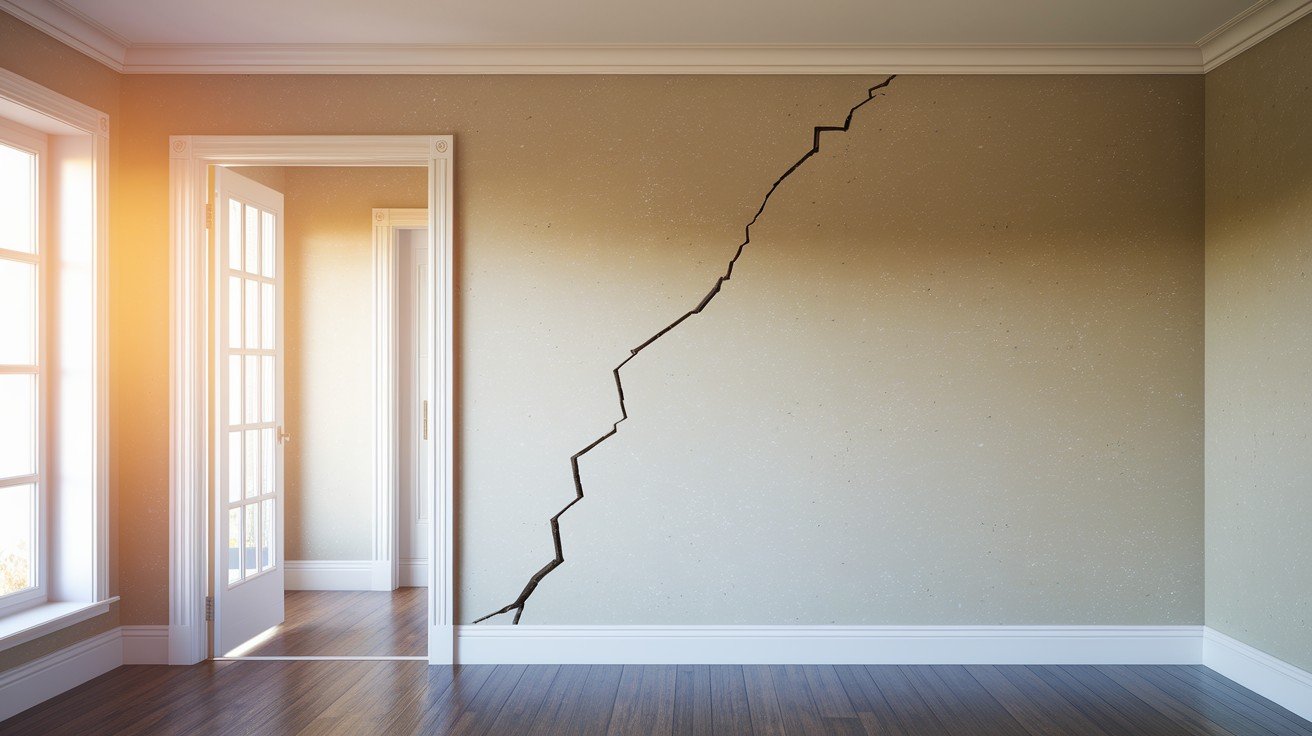
Here’s what foundation settlement means. Your house slowly moves downward from where it was originally built. Think of it like a heavy book gradually sinking into a soft cushion.
This downward movement happens over many years. You won’t notice it happening day by day. But your walls will show you what’s going on through diagonal cracks.
Why are diagonal cracks so reliable? They can’t be caused by anything else. Poor workmanship won’t create them. Bad paint jobs won’t either. When you see a diagonal crack, you’re looking at foundation settlement. Period.
I’ve seen thousands of these cracks over the years. They all tell the same story – your foundation has moved.
Uneven Foundation Movement
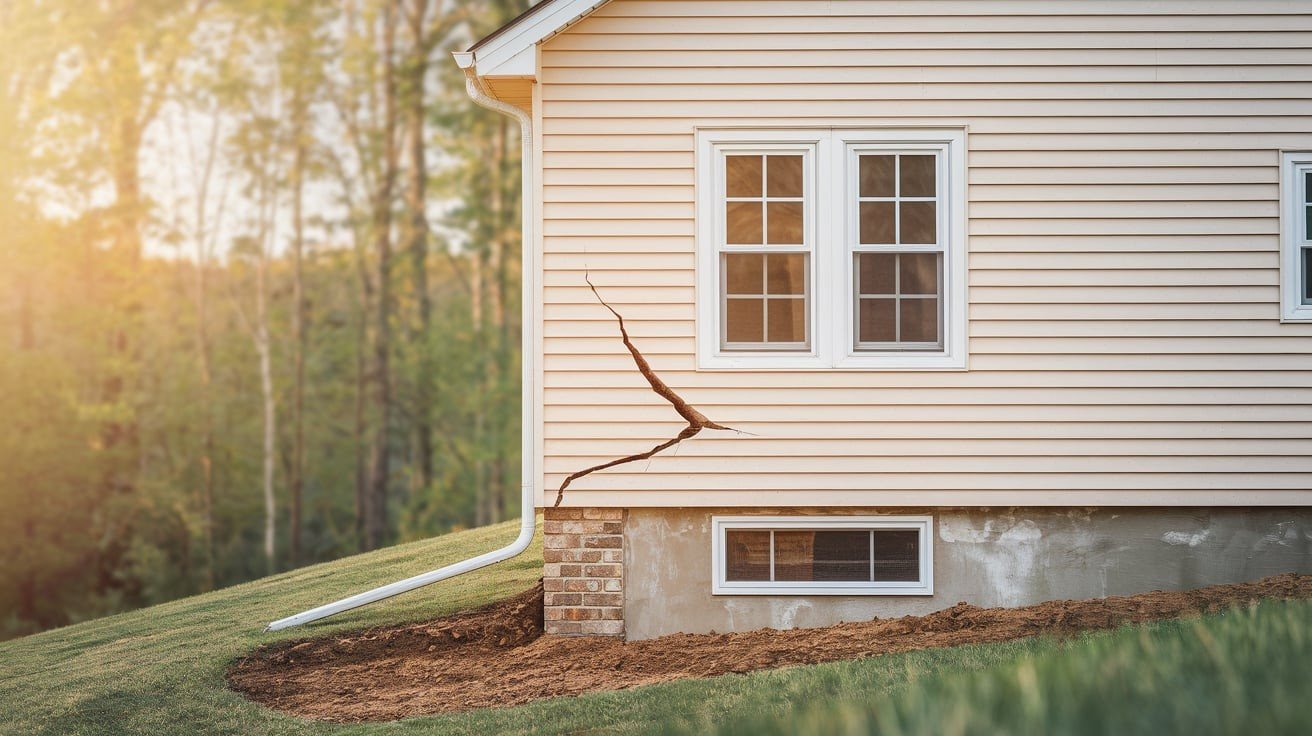
Not all foundation settlement happens evenly. Sometimes one side of your house sinks more than the other. This creates what we call differential settling.
Houses built on slopes face this problem more often. Gravity naturally pulls things downhill. When your foundation isn’t level to begin with, uneven settling becomes more likely.
This uneven movement creates stress in your home’s structure. That stress has to go somewhere. It shows up as diagonal cracks, especially around door and window openings, where the structure is naturally weaker.
Think of it like bending a piece of wood. The stress concentrates at the weak points first.
Soil-Related Contributing Factors
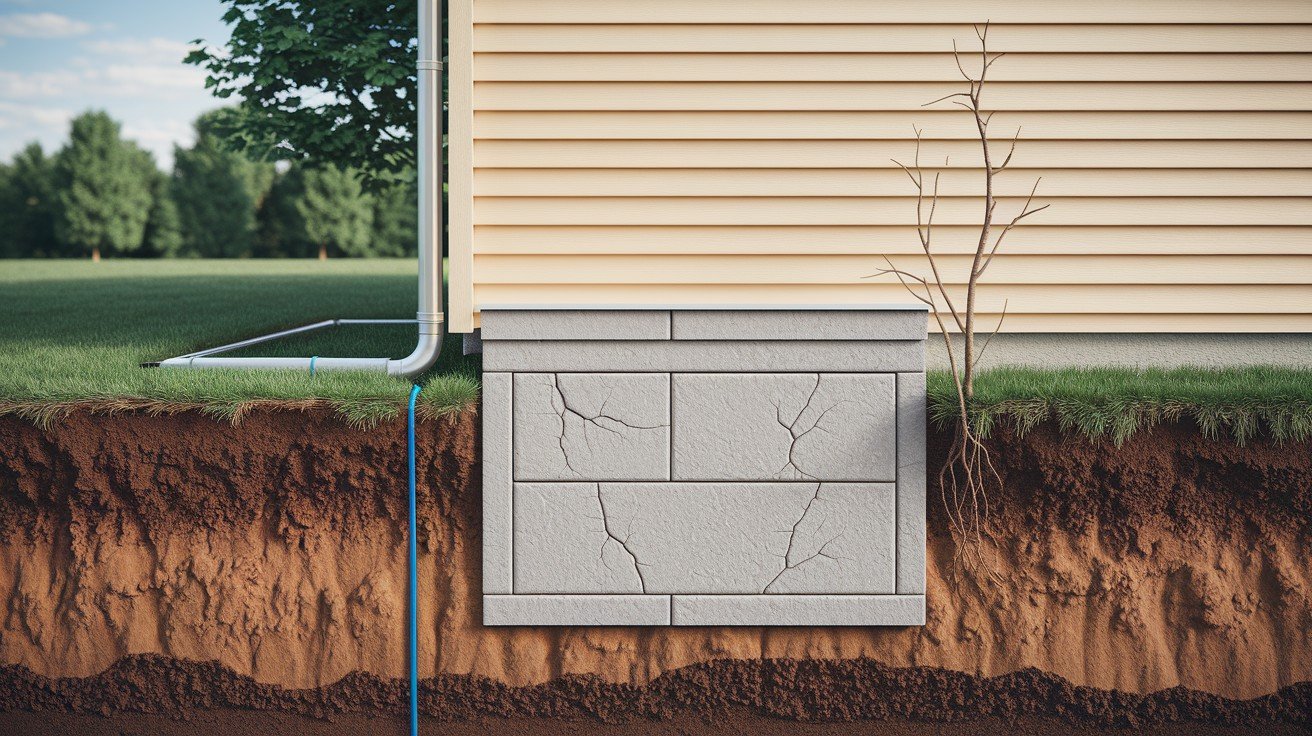
Your soil plays a huge role in foundation problems. Clay soil is the biggest troublemaker. It expands when wet and shrinks when dry.
This expansion and contraction cycle never stops. Wet seasons make the soil swell up. Dry seasons make it shrink back down. Your foundation rides this roller coaster year after year.
But here’s what makes it worse. If moisture levels aren’t even around your foundation, some areas expand more than others. This creates the uneven movement I talked about earlier.
Some homes are built on disturbed soil or old landfills. This soil settles differently than natural, undisturbed ground. It’s like building on loose sand versus solid rock.
Environmental Stress Factors
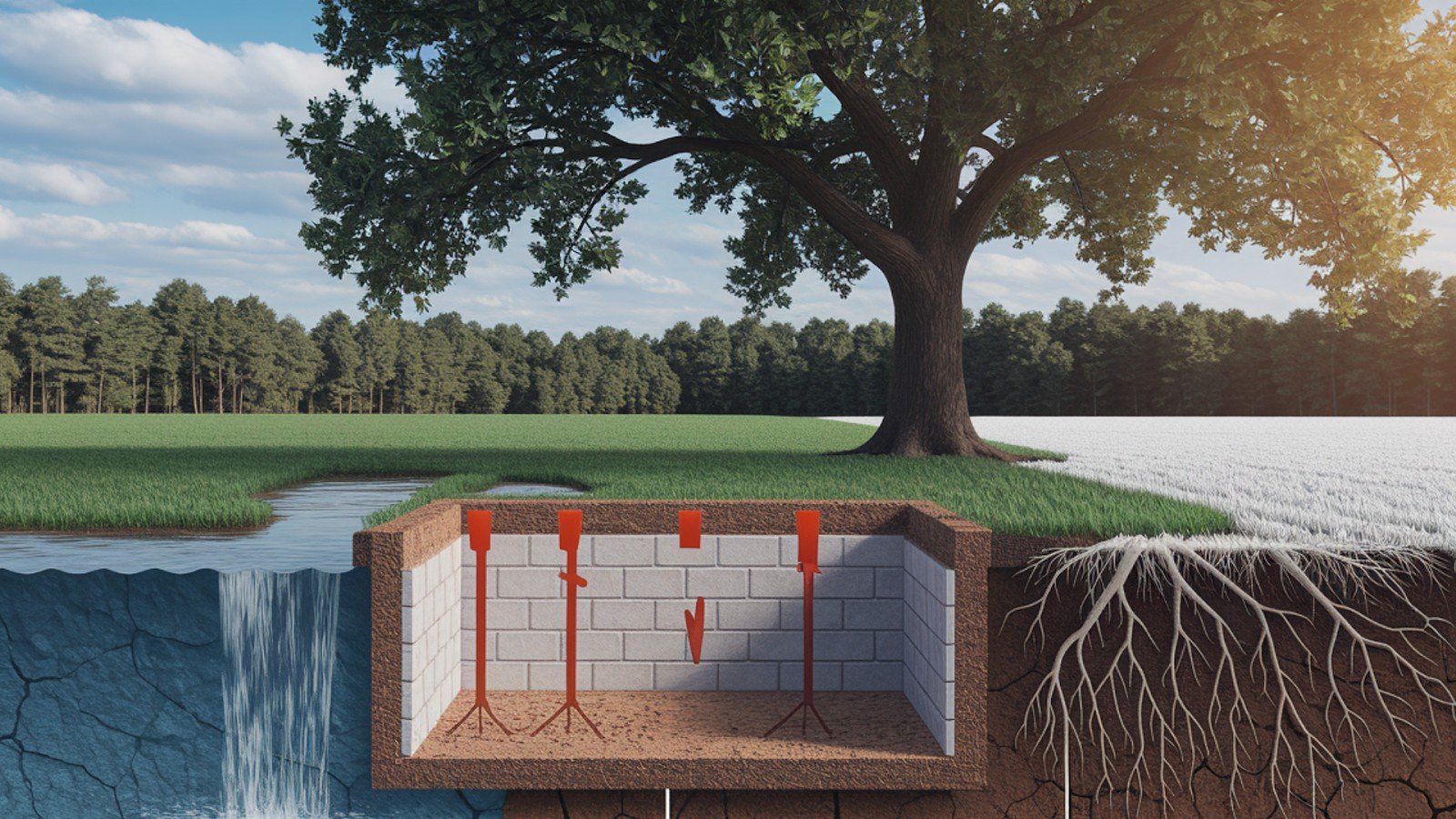
Water is the foundation enemy number one. When water builds up around your foundation, it creates hydrostatic pressure. This pressure pushes against your foundation walls.
Tree roots cause problems, too. Large trees near your foundation can push against it as they grow. Oak trees are especially troublesome with their massive root systems.
Temperature changes affect your foundation more than you think. Hot summers and cold winters make the soil expand and contract. This constant movement gradually shifts your foundation.
Poor drainage makes everything worse. If water can’t flow away from your house, it sits around your foundation. This creates the perfect conditions for settlement and movement.
How to Identify and Assess Diagonal Cracks?
Spotting diagonal cracks is just the first step. You need to know what you’re looking at and how serious it might be.
The good news? You can do most of this assessment yourself. No special tools needed. Just your eyes, a ruler, and some basic knowledge about what to look for.
Visual Assessment Techniques

Start with the basics. Get a ruler and measure your crack width. Anything wider than 1/8 inch deserves serious attention.
Look at the direction your crack travels. Most diagonal cracks point toward the area that’s settling. If the crack angles down and to the left, that’s usually where the movement is happening.
Check if your crack goes all the way to the ceiling. Cracks that stop partway up might be less serious than ones that run the full height of the wall.
Take photos from multiple angles. I can’t stress this enough. Photos help you track changes over time and show professionals exactly what you’re dealing with.
Associated Warning Signs
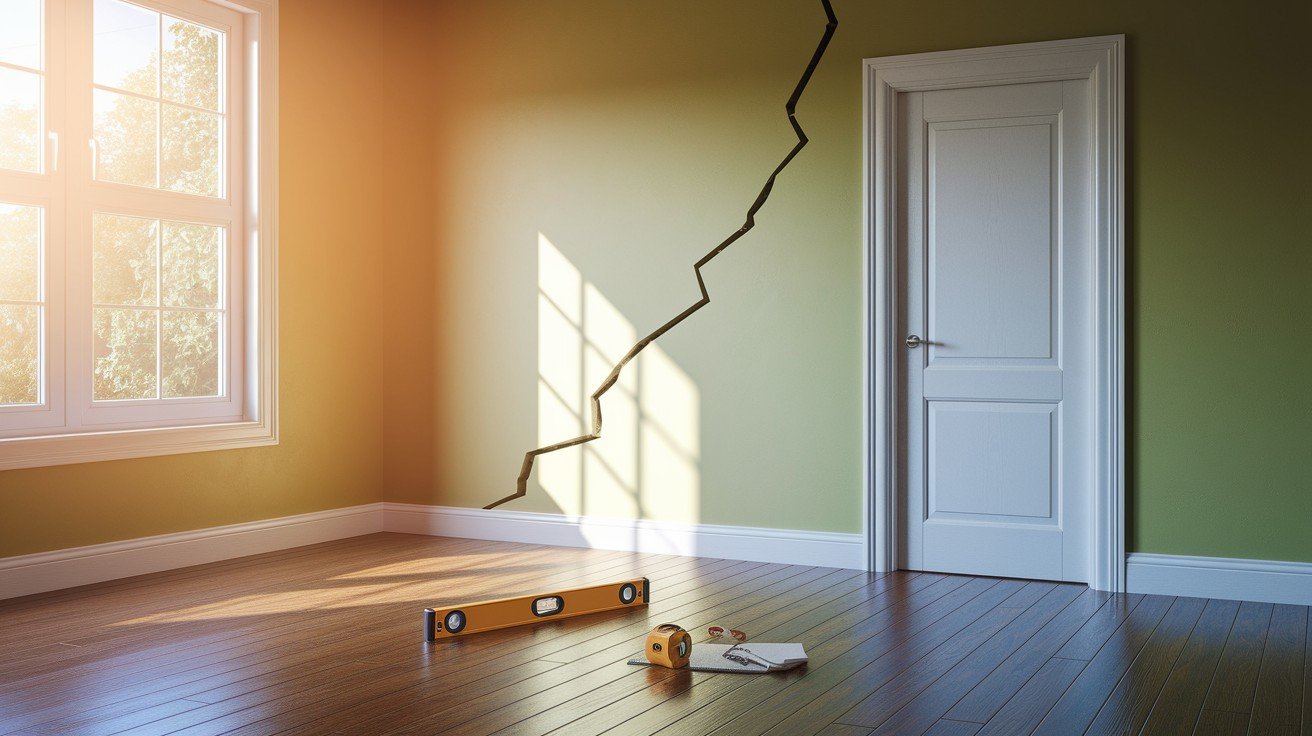
Diagonal cracks rarely travel alone. Look for other clues around your home.
Check your doors. Do they stick when you try to open them? Doors that suddenly start rubbing against the frame often signal foundation movement.
Walk around and feel your floors. Sloping or sagging floors go hand-in-hand with diagonal wall cracks.
Look for other cracks throughout your home. Foundation settlement usually affects multiple areas, not just one wall.
Pay attention to seasonal changes. Do your cracks get bigger in summer or winter? This pattern tells you a lot about what’s causing the movement.
Age and Severity Considerations
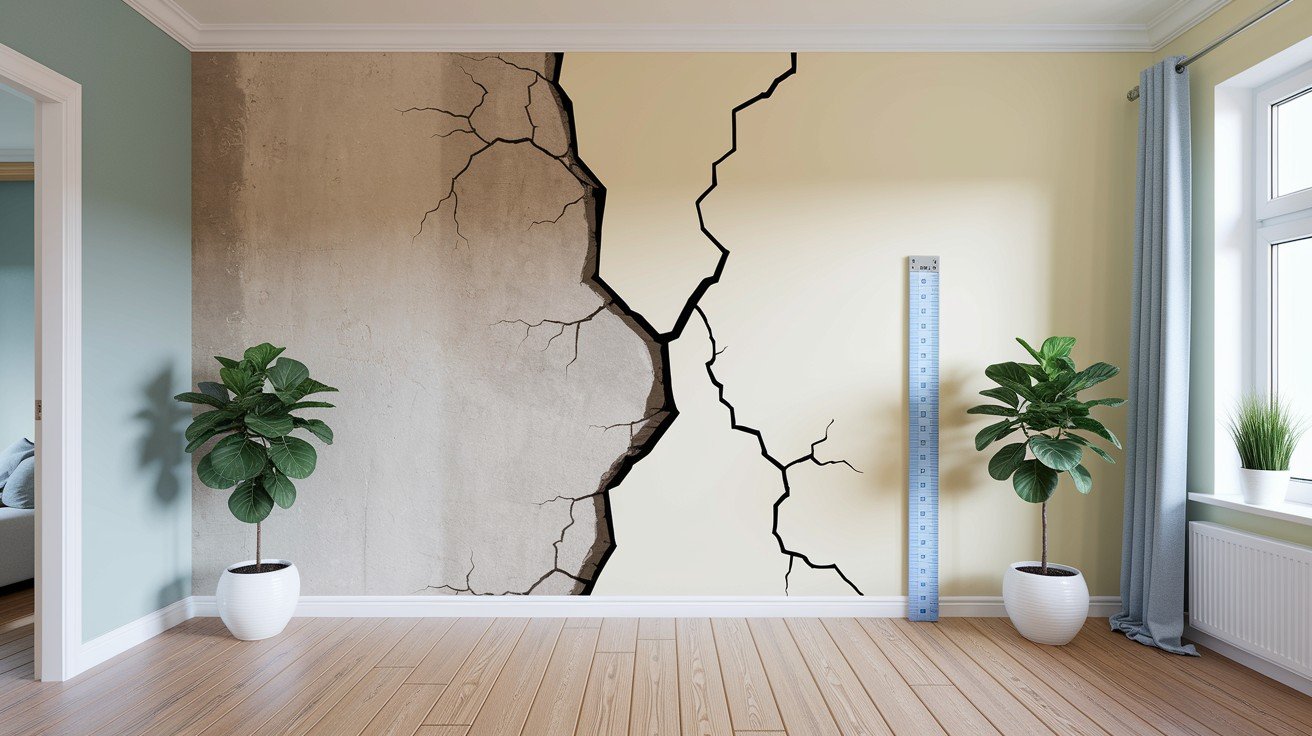
New cracks worry me more than old ones. If you’ve lived in your home for years and suddenly see diagonal cracks, something has changed recently.
The age of your home matters too. A crack in a 5-year-old house is more concerning than the same crack in a 40-year-old home that might have settled decades ago.
Multiple cracks in the same area increase the concern level. One small crack might be manageable. Three or four cracks near each other suggest bigger problems.
Width is your main measuring stick. Hairline cracks under 1/8 inch can often wait. Anything wider needs professional eyes on it soon.
Solutions for Diagonal Wall Cracks
You have options when dealing with diagonal wall cracks. The right choice depends on your specific situation, budget, and long-term goals.
Some solutions are quick and cheap. Others take time and cost more money. Understanding your options helps you make the best decision for your home and family.
Monitoring and Documentation Approach

You don’t always need to panic and call professionals immediately. Sometimes the smart move is careful monitoring.
Mark the end of each crack with a pencil. Check these marks every three months. If the crack grows past your mark, it’s actively getting worse.
Spring and fall are the best monitoring times. These seasons show you how your foundation responds to weather changes.
Take photos every time you check. Date stamp them if your camera allows it. This creates a visual timeline that professionals find extremely helpful.
Keep a simple log. Write down crack measurements and any changes you notice. This documentation proves invaluable later.
Cosmetic Repair Options
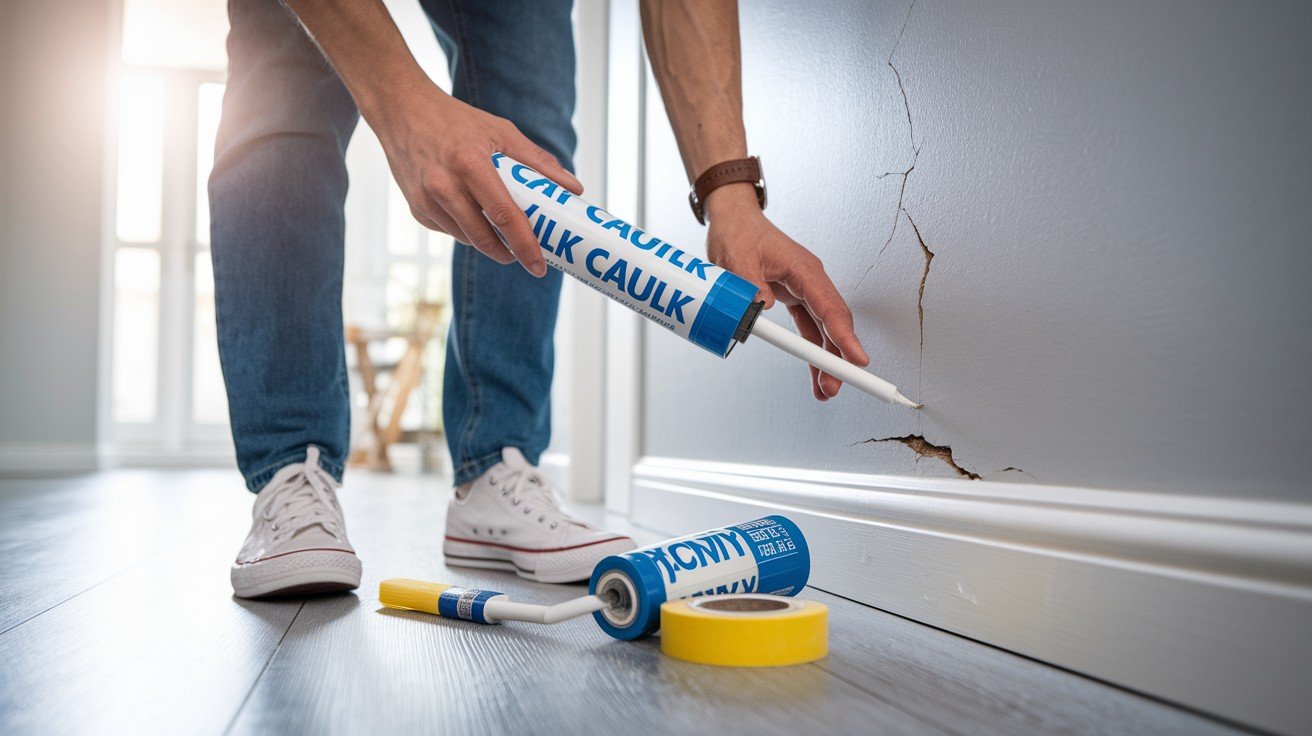
Sometimes you just need a quick fix. Maybe you’re hosting a party or showing your house to buyers. Cosmetic repairs can help temporarily.
Caulk and paint work well for narrow cracks under 1/8 inch. This approach costs very little and takes minimal time.
But understand the limitations. You’re covering the symptom, not fixing the cause. The crack will likely come back if the foundation keeps moving.
When is cosmetic repair appropriate? For stable, old cracks that haven’t changed in years. For temporary solutions before major repairs. For cracks in low-visibility areas.
Never use cosmetic repairs to hide problems when selling your home. That’s dishonest and could cause legal issues.
Foundation Repair – The Permanent Solution
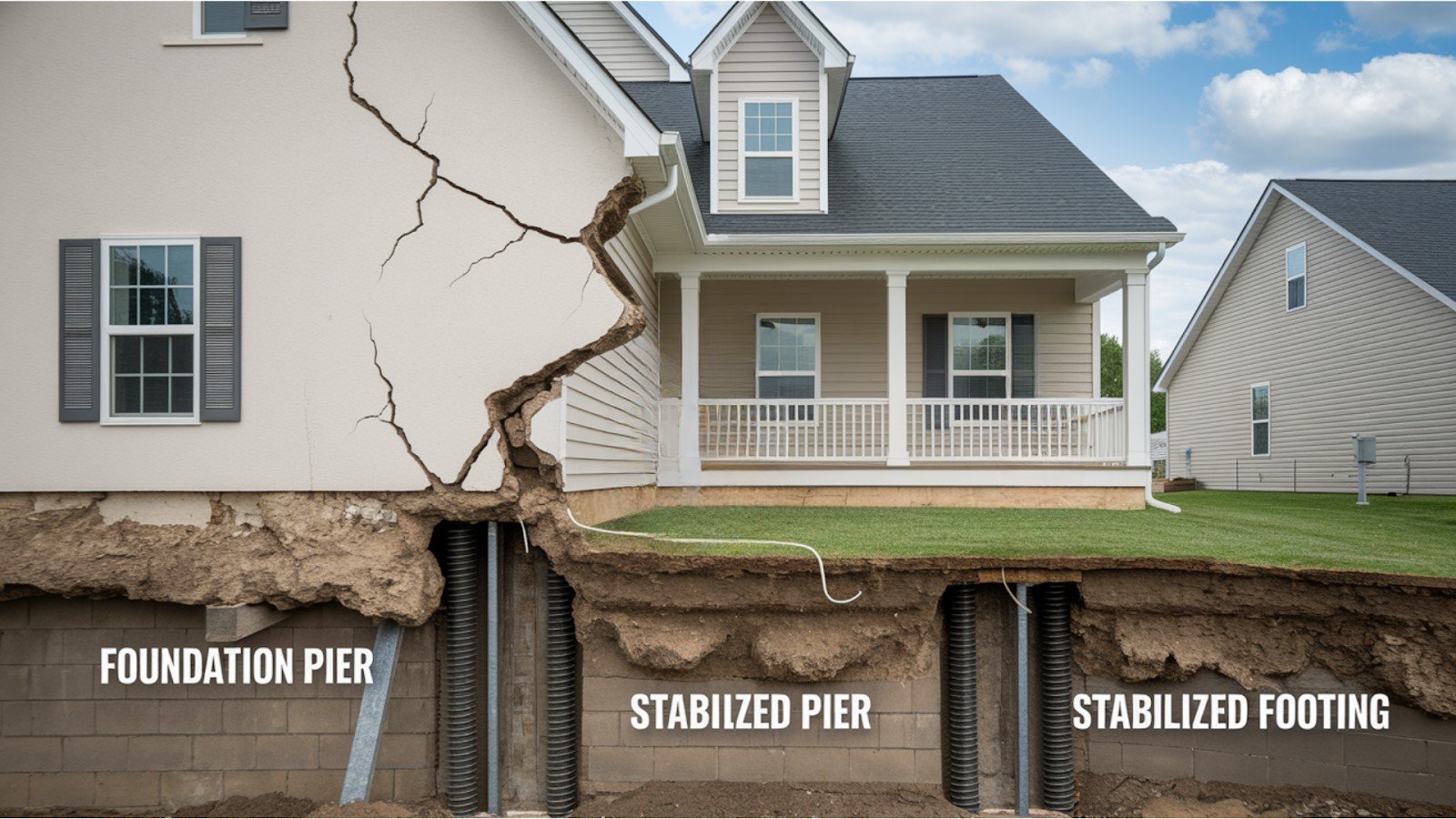
Here’s the truth about lasting crack repair. You have to fix the foundation first. Everything else is just putting a band-aid on a broken bone.
Foundation repair addresses the actual cause of your diagonal cracks. Once your foundation stops moving, your walls stop cracking.
Timing matters for complete repairs. After foundation work, wait through one full season change before fixing your drywall. Your house needs time to settle into its new position.
Yes, foundation repair costs more upfront. But it’s often the only way to permanently solve diagonal crack problems. Think of it as fixing the leak instead of just mopping up water.
Professional Assessment and Repair
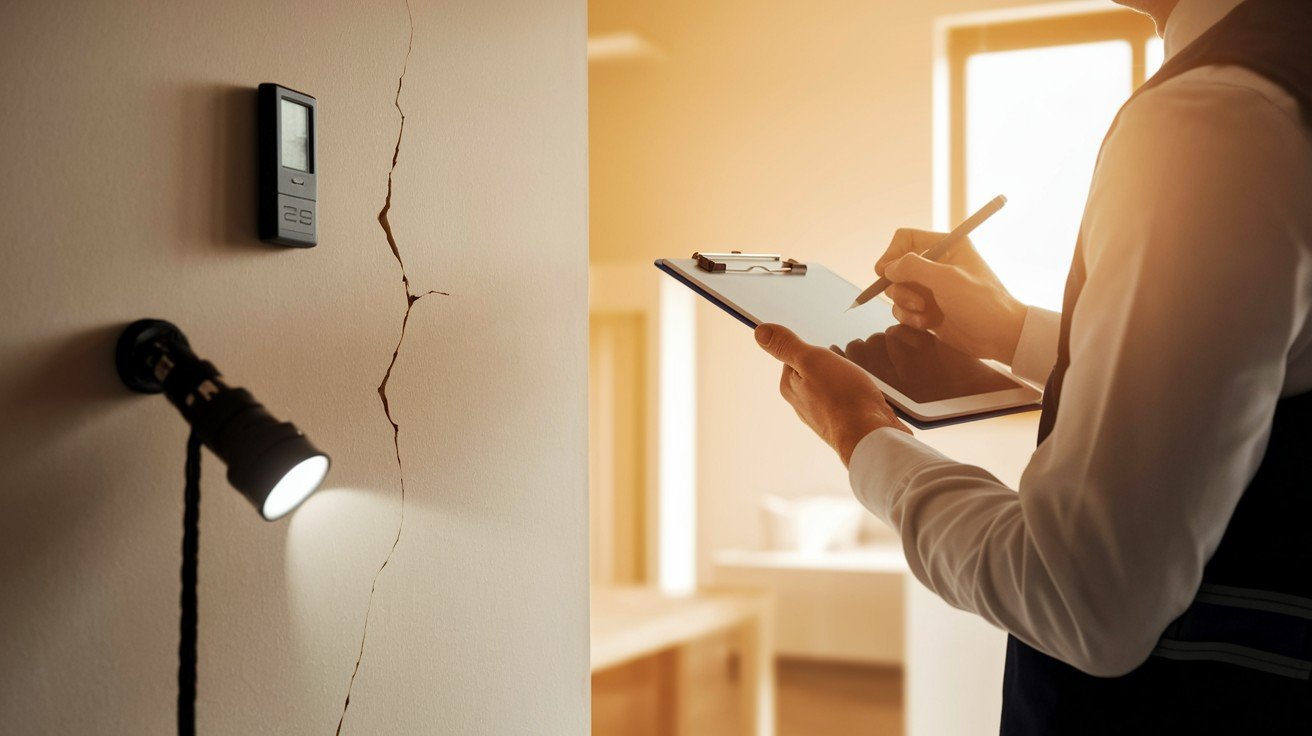
When should you call in the experts? If your cracks are wider than 1/8 inch. If they’re growing. If you see multiple warning signs.
Choose your professional carefully. Structural engineers provide unbiased assessments. Foundation repair specialists know how to fix problems. General contractors often lack the specific knowledge you need.
Get multiple opinions for expensive repairs. Foundation work is a major investment. Make sure you understand all your options before committing.
Good professionals coordinate everything. They’ll plan foundation repairs and drywall fixes in the right order. This saves you time and money over time.
Conclusion
Now you know the truth about diagonal wall cracks. They’re not just cosmetic issues – they’re your home’s way of telling you about foundation settlement.
The key is not to ignore them. Whether you choose to monitor, repair cosmetically, or fix the foundation depends on your specific situation. Remember, cracks wider than 1/8 inch need professional attention.
Take action based on what you’ve learned here. Start by documenting your cracks with photos and measurements. Check for other warning signs like sticking doors or uneven floors.
Most importantly, trust your instincts. If something feels wrong, get a professional opinion. Foundation problems don’t fix themselves, but they’re manageable when addressed properly.
Your home is your biggest investment. Protecting it starts with understanding these warning signs and responding appropriately when they appear.
Frequently Asked Questions
Are diagonal cracks always a sign of foundation problems?
Yes, diagonal wall cracks are the most reliable indicator of foundation settlement and cannot be caused by other issues.
How wide can diagonal cracks get before requiring immediate professional attention?
Diagonal cracks wider than 1/8 inch (3mm) require professional assessment, as they indicate significant foundation movement occurring.
Can I just paint over diagonal cracks to fix them permanently?
No, painting only provides temporary cosmetic coverage. Cracks will return unless the underlying foundation settlement is properly addressed first.
Do diagonal cracks appear suddenly or develop gradually over time?
Diagonal cracks develop gradually as foundation settlement occurs slowly over months or years, making regular monitoring important.
Should I be more concerned about diagonal cracks in newer or older homes?
Diagonal cracks in newer construction are more concerning, while older homes may have stabilized after decades of settling.

